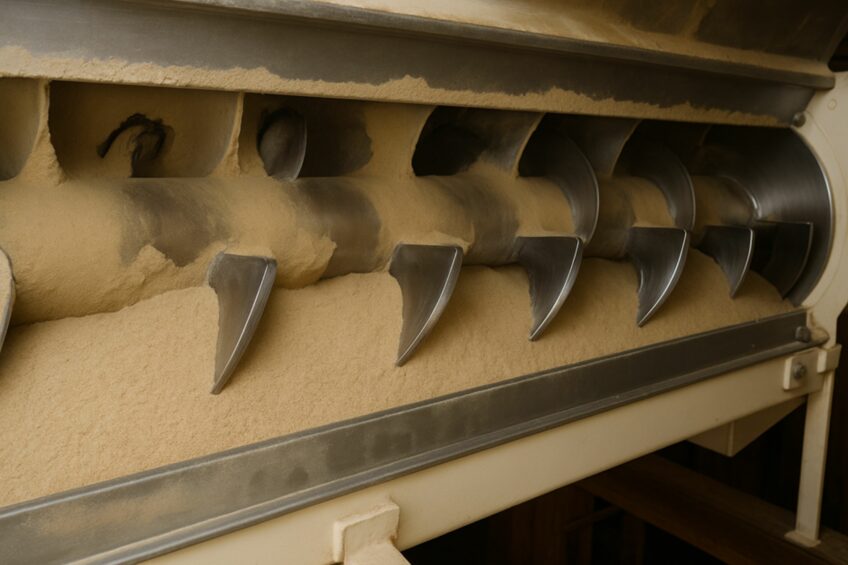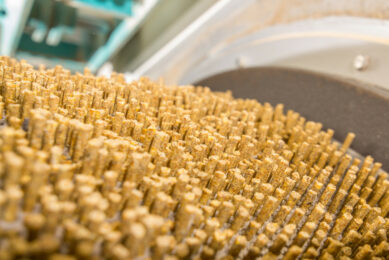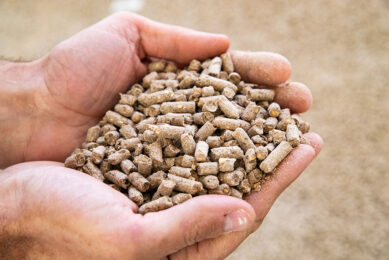The essential role of hot and cold conditioning in feed processing

In the world of animal feed production, quality is a critical factor that affects both animal performance and the economics of feed mills. One of the most important processes that determine pellet quality is conditioning, which occurs in 2 distinct stages: hot conditioning and cold conditioning.
Together, these processes balance moisture, temperature, and nutrient retention, making them essential for efficient and high-quality feed production.
To ensure effective hot and cold conditioning, process steps such as particle size reduction, mixing, and liquid addition are crucial in attaining good pellet quality. Proper moisture management at the mixer or steam conditioner stage is key to optimising the conditioning process, ensuring pellets are durable, digestible, and resistant to spoilage.
Understanding hot conditioning
Hot conditioning is a fundamental step in preparing feed ingredients for pelleting. This process involves the controlled application of steam to raise both the temperature and moisture content of the feed mash. By introducing steam, the feed particles soften, becoming more malleable for the pelleting process. The elevated temperature also triggers essential chemical changes, such as starch gelatinisation, which enhances the digestibility of the feed.
The role of steam in hot conditioning
Steam plays a pivotal role in hot conditioning. When feed mash is exposed to steam, water molecules penetrate the particles, facilitating the breakdown of starches. The process of starch gelatinisation is critical because it helps bind the feed particles together during pelleting, improving both pellet durability and feed digestibility.
Furthermore, steam conditioning enhances the moisture content of the mash, which is necessary to form pellets that can withstand the rigors of transportation and storage.
The effectiveness of hot conditioning depends on several factors, such as steam quality, conditioning time, and process temperature. Optimal conditions vary depending on the type of feed being produced. For example, poultry feed may require a higher degree of conditioning than pig feed due to differences in nutritional needs and feed structure.
Ensuring the right balance of temperature and moisture conditioning not only enhances pellet quality but also reduces wear and tear on the pellet mill, making the overall process more energy efficient.
Moisture addition in hot conditioning
A critical aspect of hot conditioning is the controlled addition of moisture. While steam conditioning contributes to increasing the feed mash’s moisture content, the initial step of liquid addition in the mixer or steam conditioner is vital in ensuring adequate moisture levels for effective conditioning.
Moisture acts as a lubricant during pellet formation, reducing friction and preventing excessive wear on machinery. The proper incorporation of water or liquid additives at this stage helps improve pellet binding, minimises fines, and enhances overall pellet quality.
Benefits of hot conditioning
Hot conditioning offers several benefits for feed production:
- Improved pellet durability: The combination of heat and moisture improves pellet integrity, reducing fines and ensuring a more uniform product.
- Enhanced nutrient availability: Starch gelatinisation during conditioning makes nutrients more accessible to animals, improving feed efficiency and digestion.
- Energy efficiency: Precise steam conditioning softens the feed particles, reducing the energy required to compress them into pellets. This results in lower energy consumption during the pelleting process.
The importance of cold conditioning
After hot conditioning and pelleting, the feed pellets retain significant heat and moisture. If left unchecked, excess moisture can lead to mould growth, spoilage, and nutrient degradation. Cold conditioning, which primarily involves moisture management in the mixer or steam conditioner stage, ensures that pellets maintain their integrity and nutritional value for transportation, storage, and consumption.
Cold conditioning focuses on the regulation of moisture levels before the cooling stage. By properly managing the addition of moisture during mixing and steam conditioning, feed manufacturers can ensure that the final pellets retain the ideal amount of moisture without becoming overly damp, which can lead to spoilage and microbial contamination.
Moisture management in cold conditioning
Moisture is a key concern in cold conditioning. While some moisture is necessary for pellet integrity, excessive moisture can promote mould and bacterial growth, especially during long-term storage. Effective cold conditioning reduces moisture levels to a safe range, typically between 12% and 14%, ensuring that the pellets maintain their quality and nutritional value.
The primary means of controlling moisture in cold conditioning occurs in the earlier stages of processing. Liquid addition and surfactants in the mixer or steam conditioner improve the feed mash’s ability to retain moisture during conditioning and pelleting.
Advanced moisture control technologies, for example esterified surfactants like SmartMoisture, help optimise moisture retention, ensuring uniform distribution and preventing localised moisture accumulation that could lead to spoilage.
The role of cooling in feed processing
After the cold conditioning process, cooling is the final step to stabilise feed pellets. Cooling reduces the temperature of the pellets, preventing condensation and maintaining structural integrity. While the focus of cold conditioning is primarily on moisture regulation, the cooling process helps remove residual heat and ensure that the pellets reach an ambient temperature suitable for storage and transportation.
Benefits of cold conditioning and cooling
Both cold conditioning and cooling contribute to the quality and stability of feed pellets:
- Prevention of mould and spoilage: Reducing moisture content prevents microbial growth, extending the shelf life of the feed.
- Pellet stability: Proper cold conditioning and cooling harden pellets, ensuring that they retain their shape, form, and durability during handling and transportation.
- Nutrient preservation: By preventing excessive moisture loss or retention, cold conditioning helps lock in nutrients, ensuring they remain bioavailable to the animals consuming the feed.
Balancing hot and cold conditioning for optimal results
To achieve successful feed processing, the key lies in balancing hot and cold conditioning. Both processes must work in harmony to produce high-quality pellets that are durable, safe, and nutritionally sound. If hot conditioning is not correctly optimised, pellets may be brittle, soft, and prone to breakage, or they may lack sufficient binding due to incomplete starch gelatinisation. On the other hand, if cold conditioning is inadequate, excess moisture can lead to spoilage, reducing the shelf life of the feed.
One of the biggest challenges in balancing hot and cold conditioning is managing moisture levels throughout the entire process. The initial steps begin at the mixer, with the addition of liquids and surfactants, allowing for proper steam acceptance to facilitate effective hot conditioning. Advanced moisture management systems and newly developed esterified surfactants can help feed mills maintain optimal moisture levels during both hot and cold conditioning. This ensures that pellets are consistently high in quality while minimising the risk of spoilage and nutrient loss.
Conclusion
Hot and cold conditioning are two critical stages in feed processing that directly impact pellet quality, feed efficiency, and overall production costs. By mastering the balance between these two processes, feed manufacturers can optimise feed quality, reduce waste, and improve profitability. Proper moisture addition in the mixer or steam conditioner stage plays a crucial role in ensuring effective hot conditioning, while precise moisture management during cold conditioning stabilises the pellets before the cooling stage. Together, these practices form the backbone of efficient and high-quality feed production, highlighting their essential role in the feed manufacturing industry.




